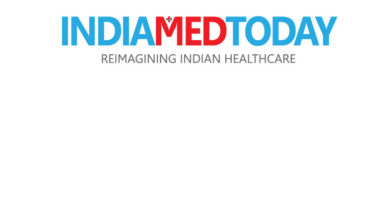
Innovations in healthcare that allow us to improve access, affordability and effectiveness, opines Venugopal Ganapathy, Co-founder and CEO, Axilor
The most common metaphor to assess one’s optimism is whether a glass is seen as half-full. Unfortunately, that metaphor does not work if one were to apply it to healthcare in general. The more accurate one will be a nearempty glass, leaving very little room for optimism. The data points are depressing across the board. In every discipline, the availability of doctors or specialists is at least one-tenth of what we need and even that is poorly distributed. When it comes to access, the difference is stark with more than 40 per cent of the doctors in the country being in just four states. The disease burden of non-communicable diseases is galloping and treatment effectiveness is lagging. In cancer, two out of three diagnosed with cancer do not live. In cardiovascular diseases, the mortality is almost one in four within the first year of diagnosis. Efficient and cost-effective elective surgeries are available in less than 20 per cent of the hospitals, mostly confined to urban areas, aggravating the economic burden to the larger population. So what kind of innovations in healthcare will allow us to improve access, affordability and effectiveness?
One good place to start is to look at what is happening in other traditional sectors with similar problems and apply them. The financial sector has a lot to offer. In the last few years, with consumer adoption of digital technologies, the incumbents have either met tough competition from ‘neo-banks’ or struck partnerships with digital platforms to leverage. This has made consumer access, acquisition and on-boarding easier, be it in banking, credit or investments. Slowly with time, the acquisition models are ceding ground to full-stack models, a logical consequence of success and scale.
Increasingly, within our portfolio and outside, we are witnessing interesting possibilities of improving access and affordability for key care verticals with these hybrid models (with the right mix of digital and physical). These models are vertical-specific, leverage digital reach while complementing existing healthcare infrastructure to achieve better capacity utilisation. Working with these innovative companies, I could identify a few innovation vectors that could significantly impact health care outcomes.
The first vector is simply utilising existing infrastructure better. A good example is what we are seeing in the elective surgeries space. Companies like Medfin, have made it easier and affordable for people to get elective surgeries. They do this by utilising excess operating theatre capacity of existing hospitals and by aggregating patient demand through their digital reach, thus making it efficient for surgeons as well. This model at scale can deliver better utilisation of existing infrastructure, improve throughput, reduce costs and enhance the patient
experience.
The second vector is disaggregating the care spectrum into discrete components and digitally stitching this. A good example is cancer care. With almost 1.2 million new cancer patients added every year, offering equitable access to cancer care is not possible with the existing number of oncologists, largely confined to urban areas. The care spectrum for cancer-like illnesses is long, complex and expensive – starting with diagnosis and extending to medical, radiation and surgical oncology interventions. By disaggregating this care spectrum and stitching its distinct components intelligently it is possible to improve efficiency, expand access, and most importantly enhance patient outcomes.
The third vector is building a pyramid of care thereby reducing the load on specialists, who are fewer in number. A good example of this is in chronic conditions like cardiovascular disorders where post-incident or post-operative care and lifestyle changes contribute to ensuring recovery and reducing mortality. And a lot of this can be achieved by a complementary model to support the cardiologist involving periodic monitoring and treatment adherence with a low-cost pyramid of care. The same applies to most chronic conditions where this model can be offered digitally thereby neutralising the disadvantages of geography, a problem faced by 80 per cent of the country.
Digital access has rapidly increased during covid times. Patients have shed their inhibition to consult a doctor online and prefer having the first chat online. Counter-intuitively, this digital access has improved an element traditionally missing in the healthcare ecosystem – trust. When we look at this year, we either have an opportunity to treat it as a blot that exposed the inadequacy of our healthcare infrastructure or as a pivotal moment when we began to reimagine new possibilities. Carpe diem!


